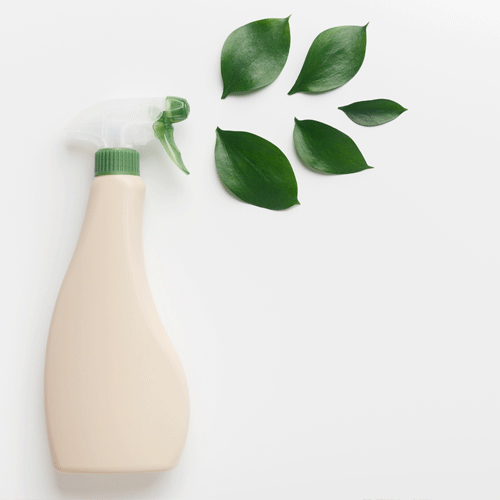Read on and learn about us.
Here is a small selection of articles on various topics, and if that's not enough to convince you of the quality of our journal, get 3 sample SOFW journals for free.

Natural Cosmetics
Sustainable & Long-lasting: Natural Cosmetics Made from Purely Plant-based Ingredients
Should personal care products be sustainable or have a long shelf-life? Preferably both. Natural cosmetics are gaining in popularity due to the increased awareness of sustainability and naturalness. In contrast, there are potential quality limitations that discourage some consumers from buying certified natural cosmetic products. The use of natural oils and plant antioxidants could be the solution for both aspects. This could be beneficial for raw material and product manufacturing companies as well as for consumers. [read full article]


Wellbeing
Ease stress – But Quickly, Please
The positive effect of aromatherapy on humans has been known for a long time. The effect is essentially based on the stimulation of the olfactory receptors in the nose. Certain smells have a relaxing and stress-reducing effect. Recent research has shown that the skin also has olfactory receptors and even bitter receptors that can be activated with appropriate molecules. In the keratinocytes, differentiation and maturation are thus stimulated via an induced influx of calcium. Here we show how a cosmetic active ingredient with a pleasant fragrance profile both reduces stress, detected by measuring stress hormones, and positively influences the skin by activating bitter receptors. [continue reading]
Skin Care
Boosting Cellular Recycling System for a Positive Skin Aging
Face and hands are the first body regions to show signs of aging. One of its manifestations is the appearance of age spots, which are the result of lipofuscin, oxidized or damaged proteins, and other cellular residues in the lysosomes. The recovery mechanism for damaged macromolecules and proteins is controlled by both the autophagic process and proteasome activity. This study is intended to evaluate the potential of a plant extract composed of Myrothamnus flabellifolia and Coffea arabica (MCE) to reduce the appearance age spots through autophagy and proteasome activity. In vitro studies in human fibroblasts with MCE showed a decrease in mTOR gene expression and an increase in Parkin, in addition to stimulating proteasome activity. These results are corroborated by a 56-day clinical evaluation, focusing on the face and hands, that indicated MCE lightens age spots and evens skin tone. MCE mitigates the signs of aging by promoting homeostasis of the cellular detoxification system through stimulation of autophagy and proteasome activity that eliminates toxins and dysfunctional cellular biological components. [check out complete content]
Hair Care
Beautifying Hair and Scalp with a Tensegrity Approach
Traditionally, the hair care has always focused on the visible part of hair: the hair shaft. But nowadays, we know that stress, pollution, nutrition, UV radiation, etc., they all affect the whole hair structure, including the scalp and the follicle. All these factors generate oxidative stress on both scalp and hair, finally causing scalp redness and flaking as well as hair breakage and fragility.
The new active ELAYA RENOVA™ nourishes and reinforces all the elements of the hair structure, improving its volume, hydration and shine from within. Made from Olea europaea stem cells, the active ingredient’s mechanism of action consists in delivering a nourishing proteo-lipidic matrix to both the scalp and the hair cortex to strengthen, volumize, hydrate and revitalize the damaged hair and scalp.
Several in vitro, ex vivo and in vivo trials demonstrate the ingredient’s activity and the new concept of restoring the Hair Tensegrity. A new way to deal with hair care, considering a ‘skinification’ approach. [read more]
Sun Care
Is My Sun Protection Fading Away? – The Impact of Photostability on Beach Goers, SPF Claims and the Environment
Sunscreens are widely used to protect against damaging effects of sun exposure. Avoiding the pain of sunburn is a key motivator for applying sunscreen, however, these products offer much broader protection because when applied correctly and balanced with informed and managed exposure, they can also protect against skin cancer and minimize skin ageing effects. A product category that has such widespread use needs to be very safe in all foreseeable ways. It also needs to be compatible with the environment, in particular marine flora and fauna as it will often be used in coastal areas such as the beach. Due to the general popularity of sunscreens, concerns of any kind tend to spread rapidly, even if an adversity claim has only been formulated as a potential hazard without proper investigation or evaluation of the likelihood and impact of the risk. Even for scientists, risk evaluations are labor-intensive processes that require a solid scientific education, so unsurprisingly, consumers who cannot make such evaluations on their own, often adopt an avoidance strategy towards potential hazards. In the case of sunscreens though, this increases the risk further, and not just in terms of sunburn, because the skin cancer incidence rate also increases. In view of this, it is of utmost importance to stick to the facts, to perform a risk analysis on hazard claims, and to provide clear information to consumers before they consider avoidance actions which may entail not so obvious downsides.
Another concern that has materialized around sunscreen centers on the fact that some UV filters – or combinations of UV filters – are not photostable and degrade, leading to a loss of performance. It sounds like a contradiction in terms that sun radiation itself could reduce the efficacy of a product designed to protect against such radiation. We have therefore revisited this topic and investigated state of the art formulas to assess how much performance is lost after a full day at the beach or on a sunny winter’s day skiing outdoors. We have also looked at the impact of photostability and claim making. What strategy should be followed – especially when creating high protection formulas? Finally, we have considered what photo-stability could mean in terms of the environment. [check out full article]
However, these active ingredients can lose their effect due to the influence of light and temperature during storage. To prevent this, packaging can be specifically adapted to the requirements of these products in terms of light protection. In addition, the packaging also protects the products from oxidative influences. An adapted oxygen and water vapor barrier can guarantee high product quality over the storage period. Currently, there is a great demand for sustainable packaging. However, these often lead to compromises in terms of barrier properties and product quality. Current research is determining how the product’s requirement for packaging can be reconciled with sustainability. With the help of so-called digital modeling tools, product quality can be predicted over the storage period, thus facilitating sustainable packaging selection. [read more]
One of the approaches to enable more sustainable products relies on high yield additives, such as rheology modifiers or structurants. Those additives helps to do more with less; lower levels of active ingredients, same performance at reduced cost, concentrated formulations. Dow Home care technical team have designed a new bio-based, biodegradable technology, SupraCare™ 780 Additive which would be a perfect fit. The present study will demonstrate how to use this new material to obtain optimum rheology in liquid formulations and high water structuring and retention across solids formats with reduced levels versus current materials. [continue]
Don't miss Out! Your 3 FREE SOFW journals
Your email address will be securely managed in accordance with our privacy policy.












